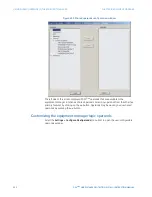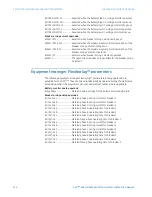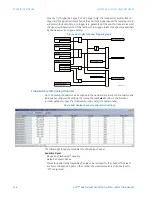
508
D90
PLUS
LINE DISTANCE PROTECTION SYSTEM – INSTRUCTION MANUAL
FAULT REPORT
CHAPTER 10: DIGITAL FAULT RECORDER
Each fault report is stored as a file, and the relay capacity is 15 files. An sixteenth (16th)
trigger overwrites the oldest file. Individual fault report features store their files in the same
memory space. The sixteenth report will overwrite the first one regardless which fault
report feature produced the sixteenth and the first records.
The EnerVista UR
Plus
Setup software is required to view all captured data. The front panel
interface can be used to view the following information:
•
Prefault and fault current and voltage phasors.
•
Active setting group.
•
Date and time of trigger.
•
Reclose shot number.
•
Fault type.
•
Distance location of the fault.
Fault type determination
Fault type determination is required for calculation of fault location. The fault
determination algorithm uses the angle between the negative-sequence and positive-
sequence components of the relay currents. To improve accuracy and speed of operation,
the fault components of the currents are used. That is, the pre-fault phasors are subtracted
from the measured current phasors. In addition to the angle relationships, certain extra
checks are performed on magnitudes of the negative-sequence and zero-sequence
currents.
Fault location
The single-ended fault location method assumes that the fault components of the currents
supplied from the local and remote systems are in phase. The figure below shows an
equivalent system for fault location.
Figure 438: Equivalent system for fault location
The following equation describes the voltage at the local bus for this equivalent system,
where
m
represents the desired per-unit distance to the fault and
Z
represents the
positive-sequence impedance of the line.
Eq. 46
The currents from the local and remote systems can be parted between their fault (
F
) and
pre-fault load (
pre
) components as follows.
Eq. 47
Neglecting the shunt parameters of the line:
Eq. 48
P=
P=
5
)
=
$
=
%
(
$
(
%
9
$
9
%
9
)
,
$
,
%
/RFDOEXV
5HPRWH
EXV
GLVWDQFHWRIDXOW
$&'5
%
$
)
$
$
,
,
5
=
P,
9
SUH
$
)
$
$
,
,
,
SUH
$
)
%
%
,
,
,
²
















































